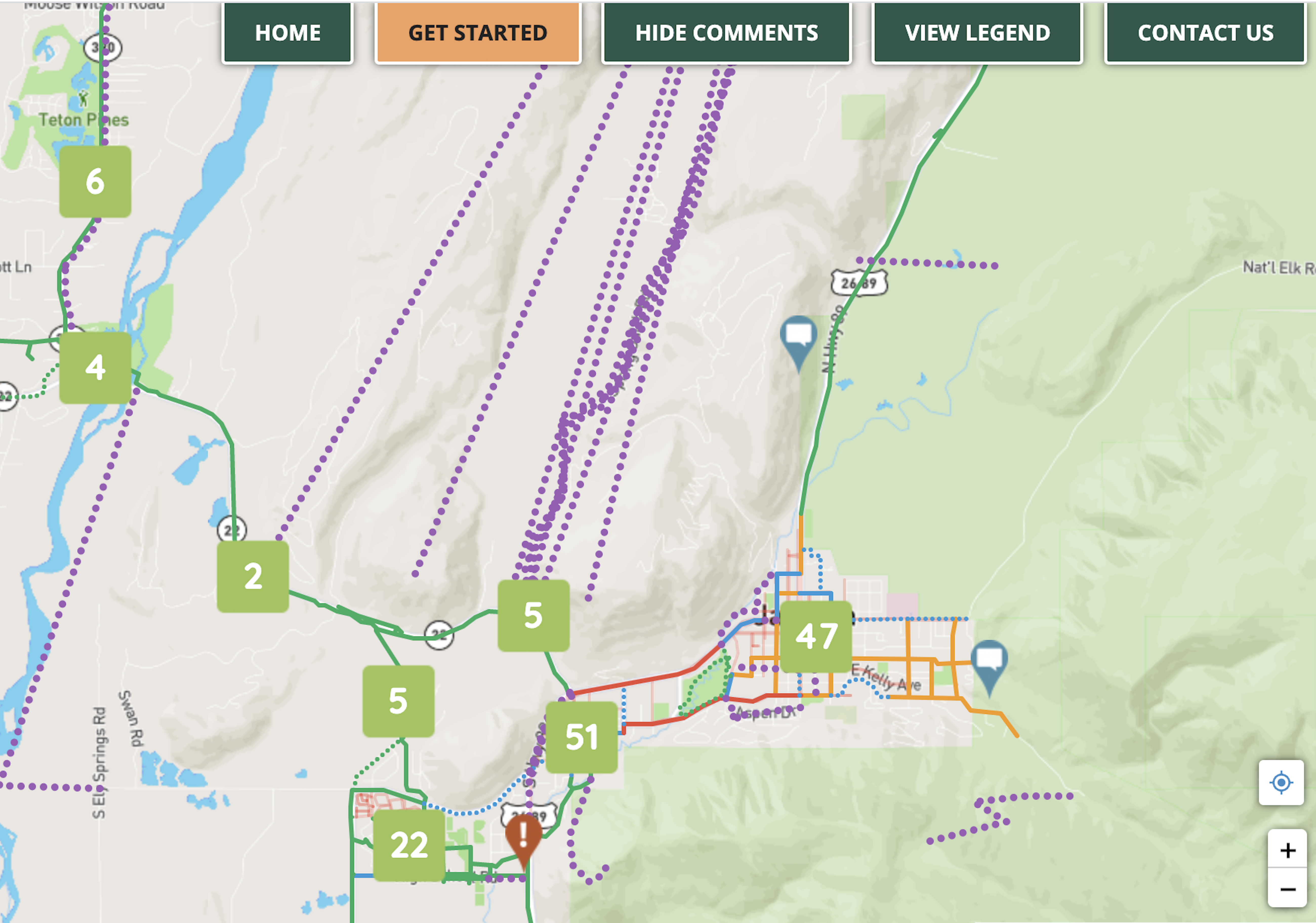The Teton Mobility Project is a joint project of Friends of Pathways and Jackson Hole Community Pathways (the Town of Jackson and Teton County Pathways program). We’re taking a fresh look at the current pathway and sidewalk system to identify deficiencies and prioritize future improvements.
THANK YOU FOR YOUR INPUT!
The public comment period concluded on September 15, 2020. Click the button below to see a summary of the public comments about pathway improvements and challenges.



